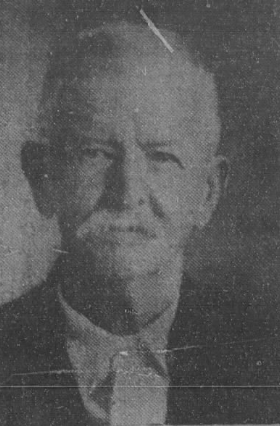James Patrick Nenney
James Patrick Nenney was born on January 11, 1841, in Russellville, Tennessee, to Charles and Sarah Nenney. His father was a farmer who owned $2,250 of real estate by 1850. He grew up and attended school in Jefferson County, Tennessee. He moved to McKinney, Texas, in May 1860, and he joined the Texas Mounted Rangers in the Indian Wars soon afterward. According to an early biographer, his company “was one of seven strung out from Fort Belknap across the western part of the state just far enough apart to patrol between to prevent the Indians from passing through.” He mustered out in October 1860, and he spent the next few months serving as a deputy postmaster.
He enlisted in the Confederate army on September 12, 1861, and he mustered in as a corporal in Company K of the 6th Texas Cavalry. The regiment took part in the Battle of Pea Ridge, the siege of Corinth, and the Atlanta campaign. He was reduced to the ranks in May 1862. He was wounded in the Second Battle of Corinth on October 3, 1862, and he spent the next few months recovering. He returned to the regiment by June 1863, and he surrendered as part of General Richard Taylor’s command in May 1865.
He returned to McKinney after the war and earned a living as a clerk. By 1870, he owned $1,200 of personal property. He married Mollie Waddell on January 1, 1870, but she apparently died several years later. He married Fannie Waddell around 1877, and they had at least seven children: Cassie, born around 1878; Claude, born around 1881; James, born around 1884; Milton, born around 1889; Aileen, born around 1893; Francis, born around 1895; and Mary, born around 1897.
He earned a living as a lumber dealer and an insurance agent. He applied for a federal pension in the early 1900s for his service in the Indian Wars, and he eventually received one. By 1930, his home was valued at $8,000. He remained in McKinney for the rest of his life, and in January 1933, a local writer reported that he “enjoy[ed] unusually good health for a man who is now withing less than eight years of the century mark.” He died there of chronic nephritis on September 17, 1933.
Image: James P. Nenney (McKinney Weekly Democrat-Gazette, 12 January 1933)
DATABASE CONTENT
| (3460) | Nenney, James Patrick | 1841-01-11 | 1933-09-17 |
- Conflict Side: Confederacy
- Role: Soldier
- Rank in: Corporal
- Rank out: Private
- Rank highest: Corporal
- Gender: Male
- Race: White
Documents - Records: 1
- (3902) [writer] ~ James P. Nenney to Family, 15 October 1862
People - Records: 1
- (3461) Nenney, Sarah is the [parent of] (3460) Nenney, James Patrick
Places - Records: 2
Regiments - Records: 1
- (1031) [enlisted] [K] ~ 6th Texas Cavalry
SOURCES
1870, 1880, 1900, 1910, 1920, and 1930 United States Federal Censuses, available from Ancestry.com; Military Service Records of James P. Nenney, available from Fold3.com; Alabama, Texas, and Virginia Confederate Pensions, 1884-1958, available from Ancestry.com; Texas Death Certificates, 1903-1982, available from Ancestry.com; General Index to Pension Files, 1861-1934, available from Ancestry.com; The McKinney (TX) Daily Courier-Gazette, 3 April 1924; McKinney (TX) Weekly Democrat-Gazette, 12 January 1933 and 21 September 1933





